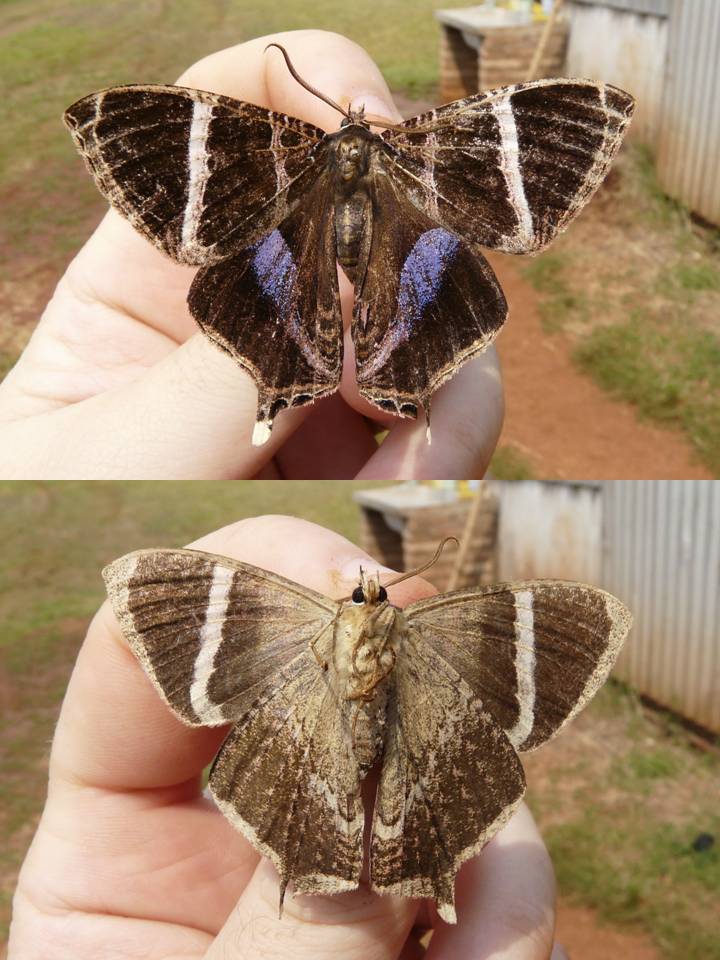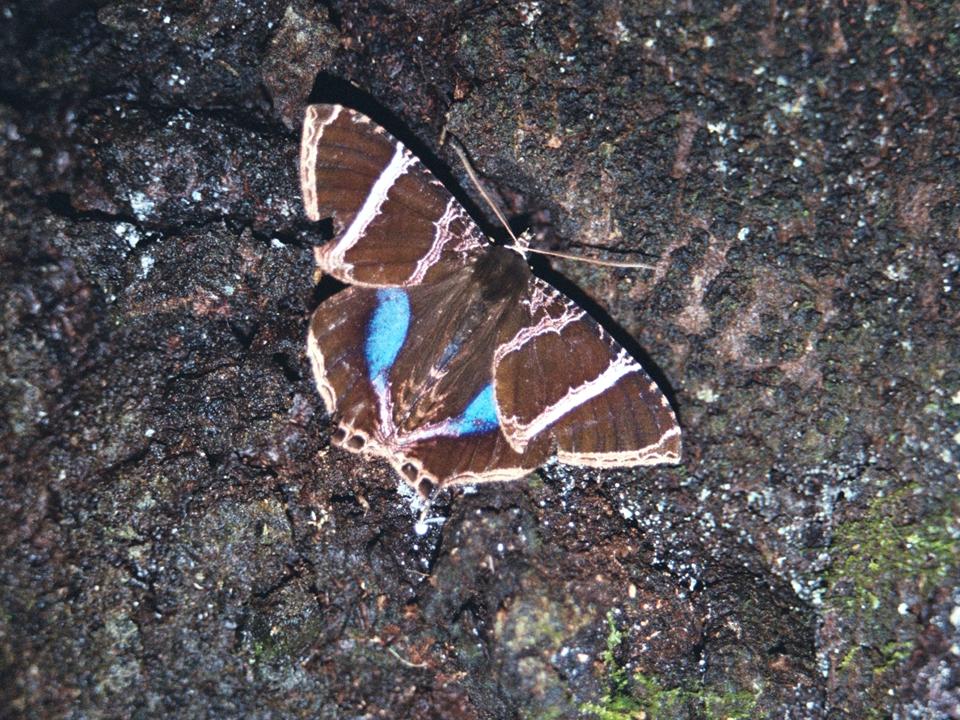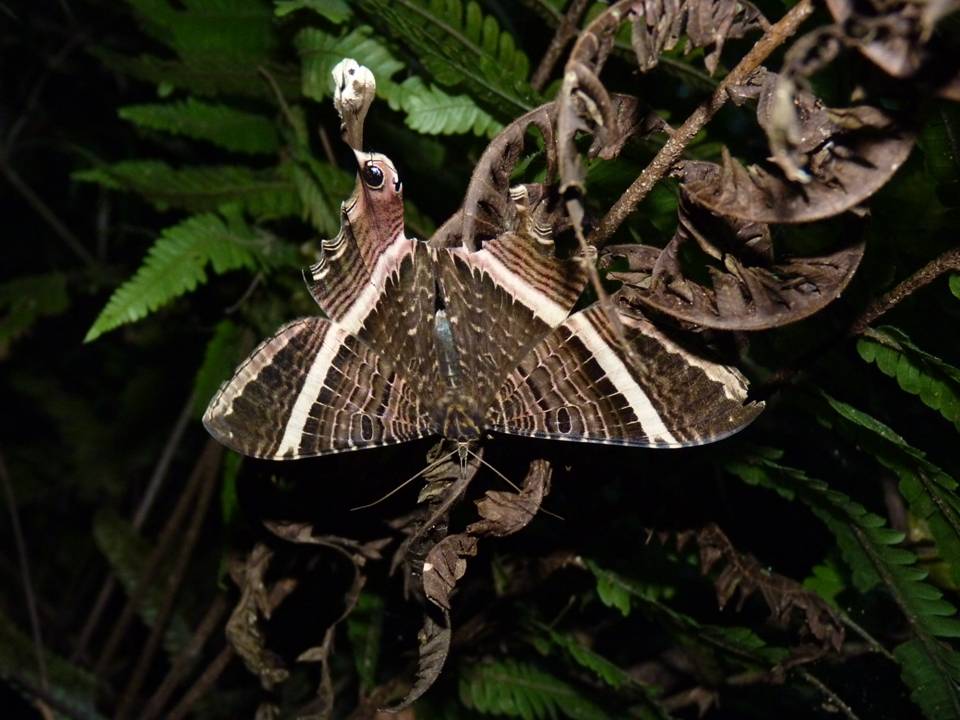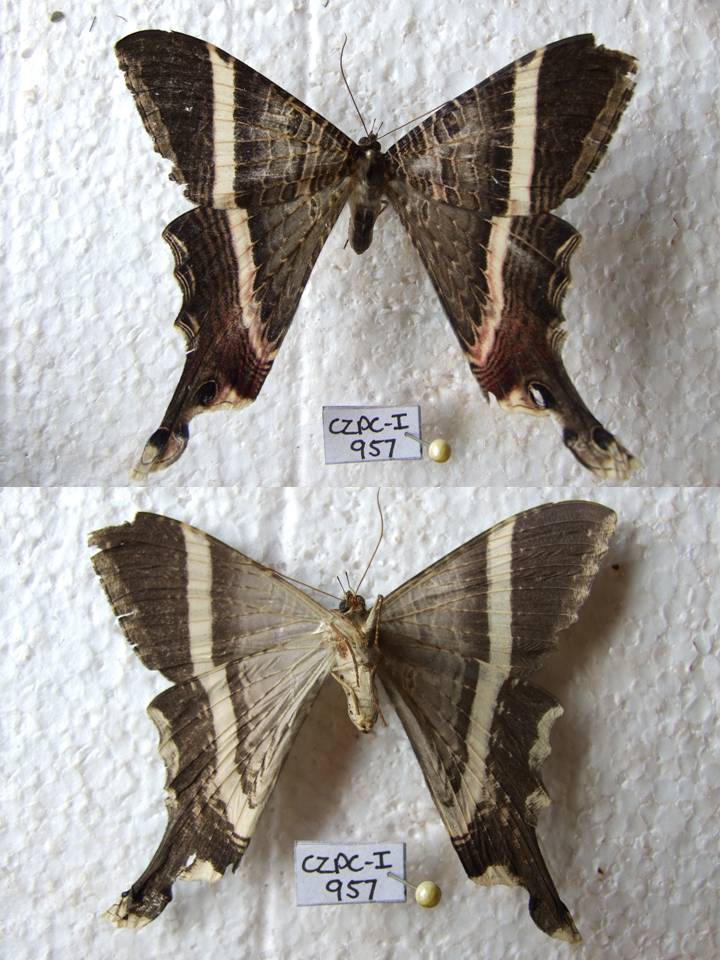Designed by Paul Smith 2006.
Thanks to Fernando Penco for help with identifications on this page.
This website is copyrighted by law. Material contained herewith may not be used without the prior written permission of FAUNA Paraguay.
Photographs on this page were taken by Paul Smith, Karina Atkinson and Alberto Esquivel and are used with their permission.

|
|
FIGURE 1
|
|

|
|
FIGURE 2
|
|

|
|
FIGURE 3
|
|

|
|
FIGURE 4
|
|
FIGURE 1 - Coronidia orithia - PROCOSARA, PN San Rafael (Paul Smith September 2008).
FIGURE 2 - Coronidia orithia - PROCOSARA, PN San Rafael (Alberto Esquivel undated).
FIGURE 3 - Sematura empedocles - PROCOSARA, PN San Rafael (Paul Smith April 2010).
FIGURE 4 - Sematura empedocles - PROCOSARA, PN San Rafael (Karina Atkinson December 2008).
This is the first record of this species in Paraguay.
SEMATURIDAE - SEMATURID MOTHS
A small family of 41, mostly Neotropical species with one genus in South Africa. Typically they are medium-sized, often spectacularly-coloured moths with tailed hindwings.
Characteristics
The lack of tympanal organs and the unusual appearance of these moths has led to them being frequently associated with the Moon Moths Uraniidae. Sematurids have prominent chaetosemata and lack external ocelli. The proboscis is well-developed and the labial palpi are prominent, weakly upcurved and with a long apical segment. Antennae usually broader towards the apex but are narrow before the tip which is frequently recurved. Epiphysis present and tibial spur formula is 0-2-4. The frenulum is weak and a retinaculum is also present. Forewing-metathoracic locking device is absent. M2 and M3 arise close together in the forewing. First abdominal segment with very large latero-tergal apodemes. (Scoble 1995).
Life Cycles
Larvae with short spinneret and ventral arm of the tegula pointed or elongated (Scoble 1995).
Classification
The position of the Sematuridae is uncertain and it was previously in a superfamily Uranioidea jointly with the Uraniidae and Asian Epicopeiidae. Current thinking places it in the superfamily Geometroidea jointly with the Uraniidae and Geometridae.
Click on the images to enlarge them.
Superfamily Geometroidea: Family Sematuridae
References:
Scoble MJ 1995 - The Lepidoptera: Form, Function and Diversity - Oxford University Press, Oxford.


